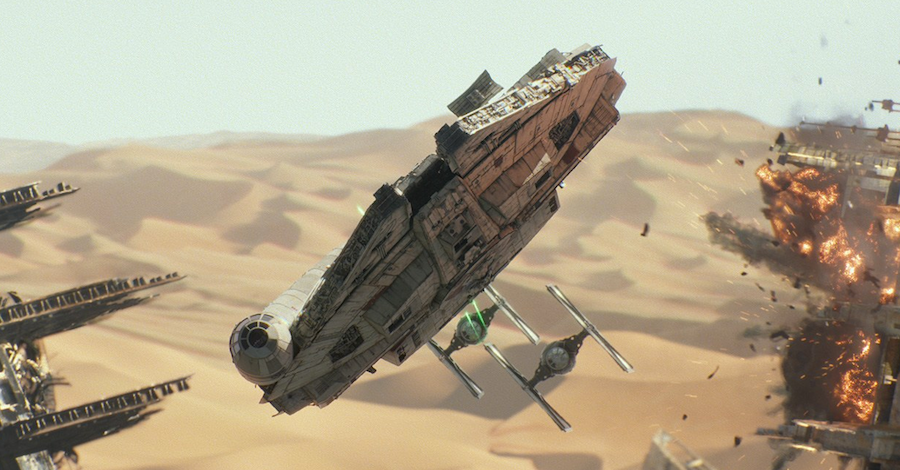Like every "Star Wars" film before it save for "Episode III: Revenge of the Sith," "The Force Awakens" was honored by the Academy of Motion Picture Arts and Sciences with a nomination for the Best Achievement in Visual Effects Oscar. In a new feature on The Hollywood Reporter, the team from Industrial Light & Magic discussed the work that went into recreating that galaxy far, far away, and specifically about one of the most iconic spaceships in cinematic history, the Millennium Falcon.
Creature effects supervisor Neal Scanlan said that ILM has an original blueprint for the expanded cockpit of the Millennium Falcon from "Empire Strikes Back," and that the team "copied that implicitly." Explaining the lengths they went to do so, he added, "Also the inside of the Millennium Falcon had pieces from an old Citroen car, and they couldn't find the pieces anymore, so they contacted the Citroen motor company to get them." He said the physical set piece used in "The Force Awakens" is "almost a 100 percent faithful reproduction of the original. It's a museum piece."
Even the digital models of the YT-1300 light freighter were diligently formed to capture the exact nature of the original. "We had the actual Falcon models that we were able to photograph," Patrick Tubach, ILM VFX supervisor, said. "A lot of the textures that you see on the Falcon were derived from those actual photographs of the models in the archive. The decals and all the little stickers and everything on there was painstakingly and lovingly put onto the Falcon."
The ILM team also discussed how they blended practical effects with modern digital ones as a means of recreating the familiarity of the original trilogy through "Episode VII's" 2,100 VFX shots. "We wanted to go back to the real locations, and build sets and have creatures and effects happening in camera when we could," VFX supervisor Roger Guyett explained. “But we didn’t want to make a retro movie, the idea was that it would seem familiar but be as innovative as the original. We wanted the charm of the in-camera stuff -- the tangible quality -- meets this 21st century contemporary technology.”
Part of how this was made possible was the fact that many of the ILM team members that worked on the original trilogy actually still work there. Dennis Muren, for example, includes wins for "The Empire Strikes Back" and "Return of the Jedi" in his collection of nine Oscars. Guyett said he "talked about how you didn’t have to be photorealistic all the time and that you could use lights to show off surfaces. So we weren't taking what he said exactly; we were inspired by their motivations.”
For more about the "Star Wars: The Force Awakens" special effects, including details on a new simulation engine and how they built Rey's speeder, check out the rest of the report at The Hollywood Reporter.

